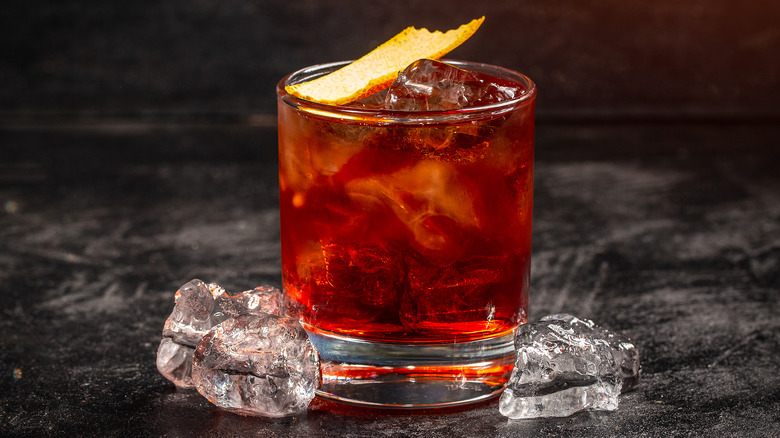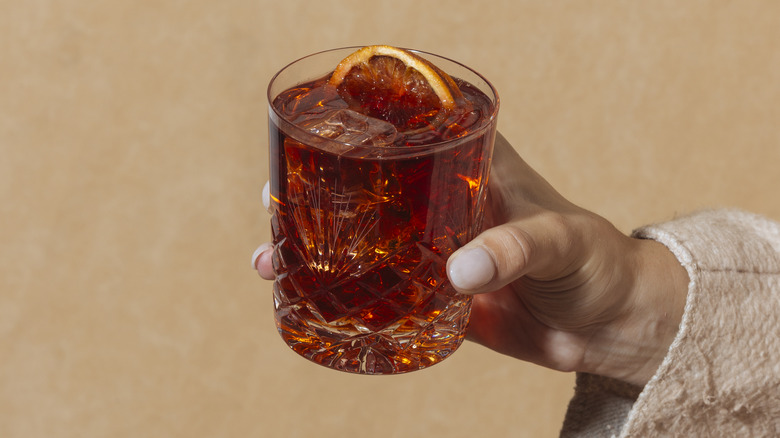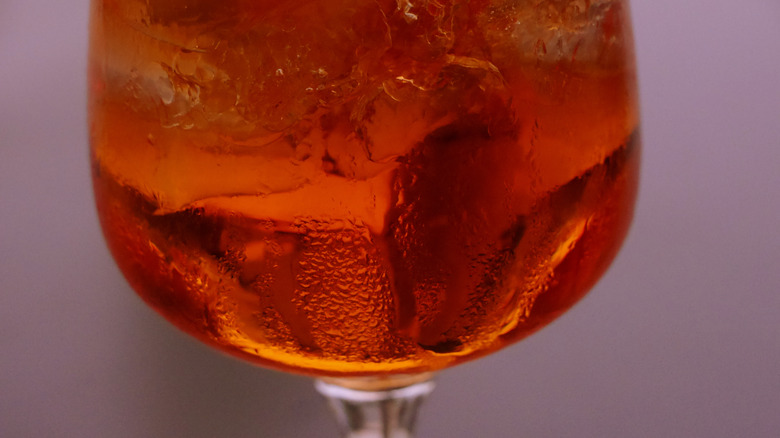Milk Washing Is The Easy Fix For Cloudy Homemade Campari
If you're a fan of Campari, you know that it is usually a bright, ruby-red color with a silky-smooth texture. The bittersweet aperitif is a beloved staple in many households and bars around the globe, thanks to its distinct herbaceous notes and versatility in cocktails. However, if you've ever attempted to create homemade Campari, you may have noticed that it often turns out cloudy and lacks the vibrant hue that makes it so visually appealing.
Milk washing, a centuries-old technique used in bartending, is a simple fix that can transform cloudy homemade Campari into a clear, bright, and smooth aperitif. This process involves first curdling the milk proteins and mixing them with the Campari. The process ends with filtration that removes impurities and cloudiness (along with some of the tannins and bitterness).
While it may seem like an improbable solution, milk washing can work. We can also help you solve the mystery of why it got cloudy in the first place. This technique can leave it the stunning ruby red it's supposed to be (and, hey, if it's still cloudy, you can always turn to some tasty Campari alternatives instead).
Easily clarify cloudy Campari
When clarifying liqueur with a milk wash, you'll first add some lemon juice to your cloudy Campari, then slowly pour the mixture into whole milk. Aim for four teaspoons of lemon juice for every cup of Campari and one cup of whole milk for every four cups of Campari. The milk and acid combine to form small curds, which trap the impurities and proteins.
Transfer the mixture into a strainer lined with a large coffee filter or cheesecloth. Allow the Campari to filter through for about an hour, and voilá: you will be left with a gorgeous, crystal-clear Campari that is as delightful to look at as it is to drink. It's worth noting that you may need to add a bit of red color back into your homemade liqueur since the milk wash process can dull its vibrant hue.
Once you have achieved the desired clarity and color, the possibilities for using this delicious homemade liqueur are endless. Take inspiration from classic cocktails such as the Negroni and Boulevardier, or experiment with your own unique concoctions. Remember to play around with different garnishes and serving styles, and savor every sip of your homemade Campari with pride. Cheers to becoming a master mixologist.
Why your Campari is cloudy
Making your own Campari can be a delightful experiment in mixology, but for many aspiring bartenders, the process leads to a frustrating result — a cloudy beverage that doesn't quite live up to its vibrant, orange-hued counterparts in the liquor store. Milk washing can help clarify your concoction, but why is your homemade Campari cloudy in the first place?
It comes down to a specific reaction between alcohol and water called the louche effect. While the louche effect is most commonly seen in anise-based liqueurs such as absinthe and ouzo, it can also occur in Campari. When mixed with alcohol, the essential oils in some ingredients create a clear, homogeneous solution. However, when water is added, a microemulsion forms and the tiny oil droplets are suspended throughout the mixture, causing it to appear cloudy.
According to a 2021 study published in ACS Omega, the temperature of your ingredients might play a role, too. Regardless of why it occurs, by using the milk washing technique, the essential oils can be extracted, leaving behind a pure and perfectly clear glass of homemade Campari.


